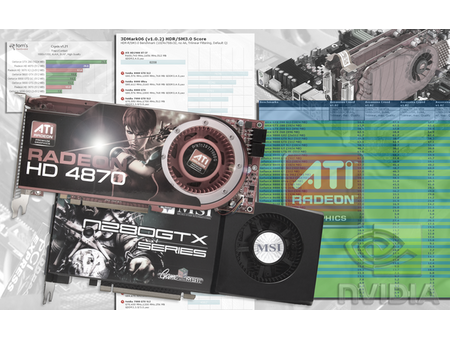VGA Charts 2008: 101 Configurations Tested
Five Generations Tested
Our largest and most up-to-date 3D comparison covers 101 different graphics card configurations spanning five technology generations. The test includes the Radeon X800, X1000, HD 2000, HD 3000, GeForce 6, 7, 8, 9 families, as well as the new HD 4000 series from AMD and both of the GTX 200 models from Nvidia. A total of 500 hours of work was invested in the 6,767 test values, which consist of tests taken at three resolutions (1280x1024, 1680x1050 and 1920x1200 pixels) both with and without anisotropic filtering (AF) and anti-aliasing (AA).
The local grid provided more than 110,000 watts of power for our tests, while the neighbors were serenaded by the maximum noise level of 58.3 dB(A) when running AMD’s Radeon HD 2900 XT CrossFire and X1950 CrossFire. The GTX 260 SLI and 8800 Ultra SLI reached temperatures of over 100 degrees C, causing the GPUs with no additional fans to give up and either choke thermally or crash the PC.
With an artificially-imposed speed limit set by the Core 2 Extreme X6800 running at 2.93 GHz, the current dual-card solutions made up of two Radeon HD 4870s, GeForce GTX 260s or GTX 280s showed very little or no improvement in overall performance. The SLI and CrossFire configurations are frequently slower than a single card due to badly optimized games. In this test environment, the right benchmark and the selected resolution determine whether purchasing the most powerful 3D boards is actually worthwhile. Performance differences are most perceptible at 1680x1050 or 1920x1200 resolutions when AA is enabled.
Editor’s Note: The following five pages will tell you all about the cards we tested, the benchmarks we ran, the settings we chose, the bugs we ran into, and the results we saw. On the last page of this introduction to our newest charts, right underneath our recommendations on which cards to consider, you’ll find a link straight to the data. Use that page for all of your own product comparisons.
Get Tom's Hardware's best news and in-depth reviews, straight to your inbox.
